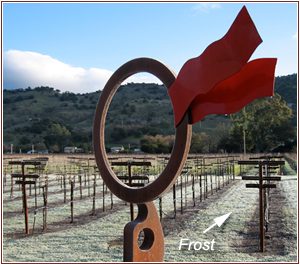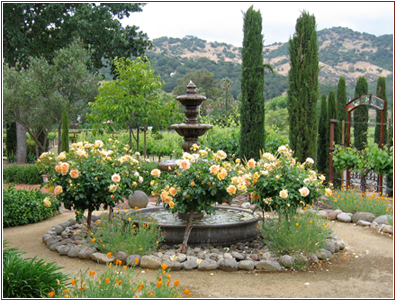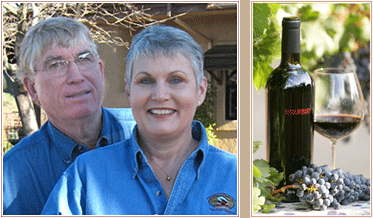
Tom Scott Vineyard Newsletter - Spring 2011 - Barnburner Cabernet Sauvignon 
Dear Friends,
April showers have brought May flowers and the place is blooming!
After seven long weeks, we finally finished pruning the vineyard on April 9th. Pruning took a full week longer this year due to the wet and cold weather conditions. It was the wettest pruning season since 2006, and for the first time we worked in hail, as well as rain and wind. We also had four nights of “frost alert” before we’d even finished the job! It will be interesting to see what this year brings, in terms of weather; maybe another wet spring (so far the case) and cooler summer like last year.
 Weather is the biggest variable when you consider the overall "terrior" in our vineyard. The nutrients in the soil remain fairly consistent, late summer watering from our wells is constant year to year, our farming practices remain unchanged, and our pruning practices continue to seek balance for each vine. So, the only thing that’s really beyond our control in a single growing season is the weather. Weather is the biggest variable when you consider the overall "terrior" in our vineyard. The nutrients in the soil remain fairly consistent, late summer watering from our wells is constant year to year, our farming practices remain unchanged, and our pruning practices continue to seek balance for each vine. So, the only thing that’s really beyond our control in a single growing season is the weather.
Variations in weather in the Napa Valley occur within a fairly narrow range. Looking back over weather data for the last 10 years, we see that the rainfall in 2010 ended three years of drought conditions, returning us to normal rainfall. While the difference between 25 inches and 45 inches is substantial, with rains falling between October and March, it comes at a time when the vines are dormant. The rain replenishes our ground water and once the soil is saturated, the remaining water runs off. There is only so much water the ground can hold and no matter how much rain we receive, ground capacity remains the same. Very little of our annual rainfall arrives in April and May and rarely do we have any rain from June to October.
 Temperature variations are also relatively minor in the Napa Valley. The average daytime temperature during a growing season is 80 degrees. We may have more cool mornings, like last year, or more 90 + days like 2008 and 2009, but all in all our little microclimate here at Tom Scott Vineyard is consistently perfect for Cabernet Sauvignon. It’s heat that most influences vine and berry development. When we have a cool season, like 2010, the accumulation of sugar and other ripening processes develop slowly. When we have a hot year, sugars and ripening develop quicker and the grapes mature earlier. Weather variations in our vineyard, while they exist, are so minor that our harvest always falls within a two-week window, late October to early November. Temperature variations are also relatively minor in the Napa Valley. The average daytime temperature during a growing season is 80 degrees. We may have more cool mornings, like last year, or more 90 + days like 2008 and 2009, but all in all our little microclimate here at Tom Scott Vineyard is consistently perfect for Cabernet Sauvignon. It’s heat that most influences vine and berry development. When we have a cool season, like 2010, the accumulation of sugar and other ripening processes develop slowly. When we have a hot year, sugars and ripening develop quicker and the grapes mature earlier. Weather variations in our vineyard, while they exist, are so minor that our harvest always falls within a two-week window, late October to early November.
Now is the time for suckering and thinning the vines and for tucking the new shoots into the protective trellising to help develop and safeguard the next vintage.
So, we are careful and consistent stewards of the vineyard, as Mother Nature has given us everything we need to continue to produce our wonderful Barn Burner Cabernet Sauvignon.
 Tom and Lauren Scott Tom and Lauren Scott
www.tomscottvineyard.com
www.tomscottvineyard.com/wineshop
info@tomscottvineyard.com
Back-issues of our Notes

|



